IN THIS ISSUE
IN MEMORY - LADISLAV JÁSEK
READING MUSIC
WHY OUR STUDENTS ARE PRACTISING LESS



IN MEMORY - LADISLAV JÁSEK
READING MUSIC
WHY OUR STUDENTS ARE PRACTISING LESS


It is with pleasure that I welcome you to the Winter 2023 edition of SA Music Teacher. As the President, I am honored to be a part of the hard working Council and admin team of MTASA, who collate and collect useful and inspiring information for inclusion in this magazine, and I would like to extend my deepest gratitude to each and every one of them for their continued support.
I am thrilled to announce that our recent Concert Performance Day was a resounding success, with record-breaking attendance and exceptional performances. The passion and dedication displayed by our members and their students were truly inspiring, and I am proud to be a part of such a thriving and dynamic community.
As we move forward, I would like to remind you all that our second Concert Performance Day is fast approaching on June 25, and it is never too early to begin planning and preparing. I encourage our members to enter their students for this exciting event as soon as possible, using our website and Eventbrite platform.


Our organisation is committed to providing our members with the resources and support they need to help their students thrive, and our Concert Performance Day is just one example of the many opportunities we offer. With your participation, I have no doubt that our upcoming event will be just as successful as the last.
In closing, I would like to thank you once again for your dedication and commitment to our organisation. Together, we can continue to promote excellence in music education and provide our students with the tools they need to succeed.
Sofie Arhontoulis, President MTASA
PATRONS : Dr Doreen Bridges AM, Emeritus Professor David Lockett AM, Her Excellency the Honourable Frances Adamson AC, Governor of South Australia and Mr Rod Bunten
PRESIDENT : Sofie Arhontoulis
VICE-PRESIDENT : Rodney Smith, Wendy Heiligenberg
SECRETARY : Elena Shakallis
TREASURER : Samantha Penny
AUDITOR : Australian Independent Audit Services
COUNCIL 2022/2023 : Sofie Arhontoulis, Pete Barter, David Brookes, Wendy Heiligenberg, Masako Kondo, Kathleen Lawler, Zuoyu Liu, Yong Cheong Lye, Yuxin Men, Anthea Mur, Samantha Penny, Elena Shakallis, Rodney Smith
EDITOR : Masako Kondo
LAYOUT : Sectrix
MEMBERSHIP ENQUIRIES to the SecretaryPO Box 4, RUNDLE MALL, SA 5000 Mobile: 0402 575 219
E-mail: info@mtasa.com.au
ADVERTISING - please contact the Secretary
Please see MEMBER INFORMATION page for Advertising Price List.
DEADLINES FOR 2023
Contributions to SA Music Teacher are most welcome. All items to be included must reach the Editor (info@mtasa.com.au) no later than these deadlines:
Friday July 14, Friday October 27.
SOME CONTRIBUTING GUIDELINES
All text is to be submitted to the Editor for review.
Italics and inverted commas for quotations - text is to be either in Italics or inside inverted commas, not both.
Single inverted commas to be used; double inverted commas only inside single inverted commas.
The inverted comma at the end of a sentence is to be inside the fullstop; outside for ! and ?
MTASA WEBSITE
Please visit mtasa.com.au
MTASA FACEBOOK
Please visit the MTASA Facebook page at www.facebook.com/MusicTeachersSA/

Sunday, 25 June
Concert Performance Day 2
Flinders Street Baptist Church 3:00 pm, 4:30 pm Via Eventbrite
Monday, 3 July
Dr Poom Prommachart webinar: Preparing Your Students for Success – The Difference between Examination and Competition
Time Ticket 8:00 pm (45 mins + 5 mins Q & A) Via Eventbrite : :
Saturday, 16 September
Competition Day (Miriam Hyde Awards)
Hartley Concert Room, The University of Adelaide 9 am, 1 pm Via Eventbrite
Sunday, 12 November
AGM
Venue Time Ticket Venue Time Ticket Venue Time Ticket
St Spyridon College 5:30 pm Via Eventbrite
The Music Teachers’ Association extends a warm welcome to the following music teachers who have joined the association. We are looking forward to meeting them at our events.
Xuting Zhao, Full, Piano, Voice, Comp, Accompaniment

David Shinn, Full, Classroom Music
Loretta Bowshall-Freeman, Full, Piano
Claire Oremland, Full, Cello
Jenny Xu, Student, Piano
Brendan O’Donnell, Student, Recorder
Geoff Driver, Full, Piano, Voice
Autumn issue – Accompanist’s Corner’s title was wrong. It should read “Ruby Anniversary of the AGSA”.
The membership fees are: Full member $125
Associate (continuing only) $115 Student member $62
Friend $33
Institution $33
The following teaching rates are recommended to members by the MTASA Council for 2023.
Full Member - $80 per hour
Student Member - $55 per hour
Membership Subscription Renewals for 2023/2024 will be due on June 30. Subscription renewal notices were sent in late June via e-mail to remind members to log in and renew their membership for the 2023/2024 financial year. If you are a Full member you will be asked to indicate that you have completed seven hours of Professional Learning during the previous twelve months. If you don’t receive an e-mail please check your spam folder. You can log in at any time to renew your membership. If it seems that you didn’t receive an e-mail, have forgotten your username or are having problems logging in please contact the Secretary. Paper invoices were sent to members who prefer to receive them.

Full members of the Music Teachers’ Association of South Australia may use the letters MMTA (member of Music Teachers’ Association) as a post-nominal while they are financial members. Interstate Music Teachers Associations are also encouraging their members to use this or a similar post-nominal.

MTASA has introduced a Professional Learning scheme for Full members. This commenced on July 1, 2019 when Full members began accumulating their seven hours of Professional Development. The scheme is designed to underpin and enhance MTASA’s established reputation for the professional excellence of its members, ensuring its standards are fully compliant with current educational expectations. These are clearly outlined in the Australian Professional Standards for Teachers (visit www.aitsl.edu.au/teach/standards) and similar documents.
From July 1, 2020 onwards Full members, when renewing their membership, will be asked to tick a box declaring that they have undertaken at least seven hours of Professional Learning during the previous twelve months.
The following examples are provided to give general guidance for Full members about Professional Learning that would be acceptable to MTASA.
These examples represent only a small sample of all the possibilities available to Full members. Generally Full members should feel comfortable about their own choices but in case of doubt you are welcome to contact the Secretary for further advice (info@mtasa.com.au).
Improved music teaching should be a major factor in all activities that Full members wish to count towards their MTASA Professional Learning.
MTASA will undertake random checks from time to time to ensure the system is working properly. So, on very rare occasions a Full member may receive a request from the Secretary for information about their Professional Learning. In such instances you may submit evidence such as certificates, programs, diary notes, recordings and so forth.
Examples of Professional Learning that would be acceptable to MTASA:
1. Online.
Attending a webinar or similar event; undertaking an online e-learning course.

2. Face-to-Face.
Attending a conference, workshop, masterclass or lecture.
3. Formal Study. Undertaking a qualification or part-qualification delivered by a recognised institution.

4. Personal Research. Studying books, journals, articles, musical scores, musical theory, analysis, etc., which lead to an example of improved music pedagogy and/or pupil performance.
Self-conducted research leading to a presentation, masterclass or workshop at a conference.
Composing an educational piece of music that motivates a group of pupils.
5. Team Research. A joint project with others that achieves particular improvements in a training ensemble.
Joint creation of music teaching materials that improve learning in a group of pupils.

Remember! These are only a few amongst many possibilities. MTASA is a community of creatives. You are encouraged to be creative in your Professional Development!
As a member of Educators SA, MTASA can offer benefits to its members. Here are some offers:
Andersons Solicitors offer MTASA members:
• 10% off legal services, in ALL areas.
• Free initial phone conversation with a lawyer.
When contacting Andersons Solicitors tell them you are a member of MTASA, which is a member organisation of Educators SA (CEASA). Visit the website at www.andersons.com.au/.
Credit Union SA has a range of education only offers. Visit the website at www.creditunionsa.com. au/community/education-communitybanking-benefits/ for more information.
Have you fulfilled the requirements for Full Membership? Student members are reminded that Student membership is restricted to four years after which time it is expected that they would be eligible for another membership category, either Full Membership by Tertiary Study or Full Membership by RPL (Recognition of Prior Learning and Experience).
Student members who are ready to upgrade their membership are invited to submit an application form to the Secretary together with the required supporting documents. Criteria can be downloaded from the MTASA website (www.mtasa.com.au) or obtained from the Secretary (info@mtasa.com.au).




New Legislation regarding Child Protection was introduced with effect from September 1, 2019. A ‘Police Check’ is now known as a ‘Working With Children Check’ (WWCC). The Working With Children Check is the most comprehensive check that exists. Anyone found guilty of breaching this legislation can be fined up to $120,000.
People working or volunteering with children in South Australia must, by law, have a Working With Children Check. A DHS/DCSI child-related check will be recognised as a Working With Children Check until it expires.

People need a Working With Children Check if they are in a ‘prescribed position’. This means people who are in paid or volunteering roles where it is reasonably foreseeable that they will work with children; run or manage a business where the employees or volunteers work with children; are employed to provide preschool, primary or secondary education to a child.
A Working With Children Check is needed for all schools (Government, Catholic and Independent). For further information go to www.screening. sa.gov.au/types-of-check/new-working-withchildren-checks.

Enthusiastic volunteers are needed to help with various jobs at MTASA events. Tasks include setting up the venue, helping with registration at the check in table, ushering, assisting performers, helping with meals, and packing up afterwards.
It is a great way to network and a volunteering certificate will be provided, which will enhance your CV!
For more information, please e-mail the Secretary at info@mtasa.com.au.
In recent years each issue of SA Music Teacher has included an article about music teaching in a country region of South Australia. There are some regions that haven’t been visited yet. If you haven’t done so please write something – it doesn’t need to be very long – and also include a photo. If you have written something before you are welcome to send an update. E-mail the Secretary at info@mtasa.com.au.
Visit mtasa.com.au/index.php/members/becomea-member/ to join MTASA.
Current Full, Student or Associate Members are not required to submit any supporting documentation to continue their MTASA membership. Anyone applying for Full Membership (either Tertiary Level Qualification and Study or Recognition of Prior Learning and Experience) or Student Membership for the first time must fulfil all of the requirements listed and submit the appropriate supporting documentation. Associate Membership is no longer being offered but those who were Associate Members on September 24, 2017, can continue their membership provided they remain as financial members. Full Membership (Recognition of Prior Learning and Experience) has replaced General Membership.
MTASA Members are always encouraged to write to the Secretary about any concerns that they may have. The MTASA Council will consider your request.
To be listed in the ‘The Directory of Teachers of Music’ on the MTASA website as a teacher of theory/musicianship applicants for Full or Student membership must supply evidence of having completed studies in this field to at least AMEB 5th Grade theory/musicianship standard or equivalent. Full, Student or Associate MTASA members wishing to have theory and/or musicianship included in their Directory listing should send copies of the relevant certificates to the Secretary (info@mtasa.com.au).
The Editor is always looking for things to include in SA Music Teacher. Articles can be about any music related topic. If you would like to write an article this is your invitation! A helpful hint, a comment, a joke, a poem, a cartoon, etc. … please e-mail them to the Secretary at info@mtasa.com.au.
One issue $110. Four issues $375.
Advertisers have two choices:
1. To provide the inserts
2. To provide the artwork, MTASA will arrange the printing and invoice for this.

Members placing an ad are entitled to a 15% discount.
AD
MTASA Members, free. Non-members, $17. Please contact the Secretary (info@mtasa.com.au) about advertising.
‘SA MUSIC TEACHER’

It is with great sadness that we report the passing of the great Czech violinist and eminent teacher Ladislav Jásek, aged 93, who made Australia his home in 1959. Following winning the prestigious Carl Flesch competition in 1956, he embarked on an international career, but due to the interest that the Czech secret police had in seeking him to provide information about the West, he sought asylum in Australia.
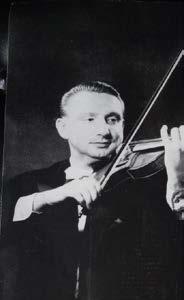
His career in Australia was varied and widespreadfrom teaching at the Elder Conservatorium in Adelaide, Brisbane and New Zealand Universities, then leading the Sydney Opera and Ballet Orchestra and finally returning to Adelaide as Concertmaster of the Adelaide Symphony Orchestra.
It has been my privilege to gather testimonials and speak to some of his former students, including Bethany Di Natale and Niki Vasilakis, and I also spoke to Madeline Melrose and Keith Crellin, OAM about their experiences with Láďa as a teacher.
Bethany Di Natale writes:
“Mr Jásek taught me violin for 10 years. He saw past my defects and straight to my potential…
I wasn’t an easy student in that I didn’t practise much and had much to correct technically. He was willing to work with me for years. I never noticed his patience, however, only his deep passion and cheer for the violin repertoire….”
Bethany’s father, Adrian Hookway praised Láďa as a patient and cheerful teacher, who instilled his passion for music in Bethany.
Niki Vasilakis describes Láďa’s generosity with his time. “He would invite me and my mum over to his house for many afternoons of sharing music, he had the biggest collection of CDs I ever did see… we would pore over scores…and he would send
me home with so many materials to listen to and compare performances… He just had so much treasure to share, and it made for some of the happiest musical afternoons for me.”
Madeline Melrose (Procopio) began playing violin aged 8 under the tuition of a university student. Her mother ran a local delicatessen, and Madeline would practice in the shop. Láďa just happened to hear her whilst shopping one day, and, recognizing her talent, became her teacher for the next 5 years. Lessons were not primarily devoted to technique, but rather he “threw her a piece”, and Madeline would rise to the challenge. She said he was wonderful for instilling musical expression in his students.
To quote Keith Crellin OAM,” Láďa epitomised the great soloist, the great artist who lived for music.” Láďa’s musical journey was not without difficulties. He had poor teaching in his early years and had not had the benefit of the science of teaching string instruments that we use today, but he pushed through these disadvantages and triumphed as a soloist and a teacher. He wanted the very best for his students and was always a kind and devoted teacher, presenting his students with the challenges and the joys of the great classics.
In his early years, he played the piano almost as well as the violin, and later regularly accompanied his lucky students in their lessons and performances.
At the age of 93, and just five days before passing away, Láďa gave his last concert with Monika at his retirement village. (They had performed a hundred and fifteen recitals there in the last 10 years!) Right until the end, Láďa was still generously and joyously spreading his passion for music to one and all.
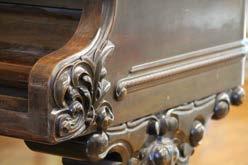

“Reading as a language précis.”
“To read music is to learn a language. Despite music surrounding us from birth, to understand and decipher symbols which relate to the sounds we hear is a formidable challenge. For the process to be manageable and enjoyable for children, there must be immediate and sustainable rewards built into the process.
By relating each aspect of music reading to music activities which are pleasurable and exciting, this journey can be one of exploration and curiosity.”
The precursors to reading music are the reactions to music which involve recognising concepts such as rhythm and pitch. How are they related to existing skills, such as movement, singing, letter reading and writing? Then there are the spatial relationships to pitch, rhythm and the specific instrument involved.
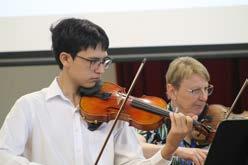
Ruth suggested we need to explore the student’s primary connection to music: what is the relevance of music to the student? This will help us establish their motivation for learning to play music.
We need to teach the note durations and note placements both visually and by name. For the former, Kodaly ta and ti-ti are common in schools. For the latter, do-re-mi syllables are easily learnt, particularly for singers, (moveable or fixed do, that is the question), but as instrumental teachers we still must end up with the letter names.
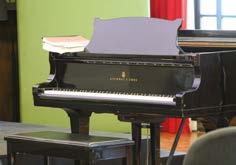
With reference to rhythm, finding a relationship to existing skills is advisable. For example, locomotive actions such as walking, running, skipping, sliding, swaying build a clear rhythmic sense. Then using more restrained movements such as tapping, clapping and patsching becomes a bridge from whole body movement to learning rhythm names. Spatial concepts are useful. Rhythm – duration is speed, distance and energy. Pitch is high or low, tight and loose, long and short, thick and thin. Ruth referred to the spatial concepts of pitch which are different for each instrument – for the piano- left is low and right is high, for horizontal strings far is low, close is high, left is low, right is high, left close is higher than right far. For vertical strings close is low, far is high, right far is higher than next-left close etc. No wonder it is confusing She suggested exploring the spatial concepts that apply to pitch on your particular instrument.
The steps to reading music are: 1. Separation of rhythm and pitch. 2. Visual recognition of rhythmic symbols. 3. Using rhythmic symbols as incitation to action (on or off the instrument) 4. Visual recognition of pitch symbols: the staff. 5. Recognition of the various sounds of the symbols. 5. Whole body exploration of the staff.
Ruth’s message was that reading music is an adventure. “Good preparation helps ensure the journey is, if not always smooth, full of variety and meaning.”

On Saturday 22 April the MTASA held the first Concert Performance Day for 2023.
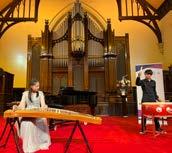
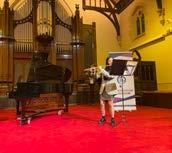

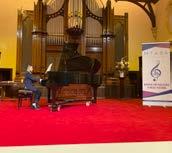

Session 1 was quite lengthy, featuring a total of 33 performers, including 26 pianists, 4 cellists, 3 guzheng players, and a drummer. Despite the extended duration of the session, both the performers and audience members remained fully engaged and enthusiastic throughout. Congratulations are in order for all of the performers who managed to deliver such impressive performances without the benefit of a warm-up, and some of whom had to wait for an extended period of time. Additionally, we would like to extend our apologies for any inconvenience caused by the wait. Nonetheless, the turnout was fantastic, and we are grateful to
everyone who participated.
Despite a few performers experiencing moments of insecurity, the entire group persevered and fearlessly completed their chosen pieces. It’s no secret that memorising music can be a daunting task, and some players weren’t quite ready to perform without their sheet music. However, they still managed to play certain passages from memory, even if they occasionally stumbled. This particular session showcased a predominantly young group of performers, with some pieces lasting only 20 seconds. As a result, our reviewers had to stay alert and attentive throughout the entire performance.
was the appearance of three Guzheng players, all dressed in stunning traditional attire. Their performance was a feast for the senses, with evocative and fascinating tone colours that left the audience spellbound. Additionally, a brother and sister duo, Sasha (Guzheng) and Jordan Sun (Drum), delivered a thrilling rendition of Battle Against Typhoon by Weng Chang Yuan. Their performance was dramatic and exciting, leaving the audience on the edge of their seats. Due to time constraints, our reviewers were unable to provide general comments on the performances. Nonetheless, it was an afternoon filled with exceptional talent and unforgettable moments. During Session 2, there were a couple of violinists and several pianists, with similar excellent performances.
Moving on to Session 3, we had a flautist and a violinist, along with a diverse group of pianists of varying ages and skill levels. Yong Cheong
the session, encouraging performers to take the suggestions of the reviewers into account in order to improve their future performances.

We would like to extend our gratitude to Kaye Fitton, Zuoyu Liu, and Wendy Heiligenberg for their contributions during the first session. For Session 2, we had Kathleen Lawler and Wendy Heiligenberg, and for Session 3, Yong Cheong Lye and Yuxin Men. Their expertise and insights were invaluable in making these sessions a success. Deep thanks go to Masako Kondo for the programming, a massive task, and our Secretary Elena Shakallis for expertly handling the large groups for the afternoon.
Due to the overwhelming popularity of CP Day 1, the sessions ran well over the limited time allowed, and therefore we have decided to limit the entries for CP Day 2 in June, so best to enter as soon as possible, via our website, before ticket entries sell out!

 READING
READING
Why do our young pianists seem so reluctant to move into the area of ensemble music?......
Graduates in piano performance surely would be more than competent to accompany and be greatly appreciated by instrumentalists needing a partner for rehearsals, exams, concerts, auditions etc.

Few can make a living as solo performers – even established professional concert pianists spend time in ensemble work, not only for income, but for the enrichment of musical understanding and experience that comes from meeting and sharing the wider repertoire.
If we search online for the requirements in professional accompanying, we find a very comprehensive list:
Accompanists’ are highly skilled instrumentalists with a deep interest in collaboration and education. The job requires immense adaptability and comfort with the unpredictability of live performance. In addition, they must possess the ability to work together with almost anyone, and to take direction quickly and quietly…………..………………………..
1. Strong technique is expected, also the
2. Ability to take the solo spot where appropriate
3. Broad musical repertoire and knowledge
4. Collaboration (rehearsed and on-the-spot)
5. Great ears for musical nuance (tempo, phrasing, tone, etc.)

6. Coaching / networking / punctuality
All this looks quite daunting, so perhaps it’s not surprising that young pianists are wary and prefer to go into another career path, or into teaching as a safer and perhaps less challenging occupation. Sadly then, many of our very able graduands find their student numbers growing, the hours become tiringly long, they lose the energy to keep up the personal practice needed to continue solo performing, and gradually stop playing ….so we lose many good potential accompanists!
If we dig deeply enough for the real reason, it becomes clear that the biggest apparent stumbling block is the lack of early interest in the most necessary skill i.e. ease in reading music, which leads to faster learning.
Slow readers take longer to learn something new; often I’ve referred the occasional ‘would-be accompanist’ to instrumentalists needing a pianist, but most have refused the ‘job’ as too difficult/too short notice/not enough time to prepare etc.
of reading – many solo performers have achieved stardom by largely aural learning and sheer technical prowess – Pavarotti, for one, couldn’t read music until quite advanced in his career!!! - but in ensemble playing, skilled reading does become a necessity.

Many of our younger students learn by rote, copying tutorials on you-tube, memorising by ear and preparing only exam material…..all of which are useful of course but they don’t encourage musical exploration or any initiative in learning to personally interpret a work.
As children we learn to read words, sentences, books in English or any other language, which makes us what we call LITERATE. As music lovers, shouldn’t we do the same to become musically literate? – learning early in our music study to decipher the symbols on a stave and reading music as another language? – so that we can eventually pick up a score and discover how it sounds?
Another quote from online :

“At its very simplest, music is a language just like you’d read aloud from a book….. Learning how to read music really does open up a whole new world to explore! “
Music uses only seven letters of the alphabet for pitch, ten lines/spaces to hold them and mostly only five or six different note lengths to organise the rhythm – it’s hard to believe that for centuries music has been composed with no more than these few tools!
AGSA has confronted this issue for many years. Looking for a solution, we’ve invited quite young pianists to prepare more than exam repertoire, encouraging ensemble playing in two projects, the JEMs (Junior Ensemble Musicians collaborating with their peers) and YAS (the Young Accompanist

working with professional soloists). Presenting a public concert each year, participants in both have a lot of fun preparing programs with help of their teachers/tutors. They look forward to continuing the experience and several have gone on to accompany their schools’ musical activities…….a good sign for the future!
Playing duets, an excellent way to stimulate confidence in reading, rhythm and flexibility, used to be a common ‘recreation’ activity in homes and schools. Today, given our ongoing lesson timeconstraints, are we now just too busy, or is the need to gain certificates and scholarships a more pressing priority?
If we as teachers could place greater emphasis on early reading, we’d have more ‘accompanists’ to fill the needs of our instrumentalists and we’d hopefully generate more pianists who are confident enough in their self-teaching, to add to their solo playing the joys and rewards of musical SHARING! Monika.
In my last article, I promised that this column would look at the training of a music theatre voice. In every area of music training, there is a language – a sort of trade lingo – that performers, teachers and coaches use. Singing teaching is no exception. Young singers and inexperienced singing teachers need to get their heads around a bunch of terms, techniques and methods. Especially singing teachers working in music theatre genres.

What style do you teach?
For starters: if your prospective student’s parents have Googled themselves into a “we know what makes for excellence in music theatre singing” place, they are likely to grill you:
Q: What style of singing do you teach? Classical? We’ve heard that classical is the best preparation for a singer.
A: Although I’m well aware of bel canto, Tosi, Mancini, Garcia and Lamperti, my teaching covers the breadth of singing styles demanded by the music theatre repertoire.
Q: Oh, so you teach popular singing styles, do you?
A: And Mozart is unpopular now? This “Classical/ Popular” divide is pointless. And “Classical/Nonclassical” is even worse. We don’t call cats “nondogs”. Let’s call what I teach “Contemporary Commercial Music” (CCM), a term leading singing pedagogue Jeannette LoVetri coined in 2003. CCM is a useful descriptor for many musical styles, one of which is music theatre.
What method do you teach?
Q: OK. So you call it CCM. But whose singing method do you use? SLS? EVT? CVT? SVW? Drop a name!
Militant “value-for-money” parents are aware of training methods prominently displayed on some singing teachers’ websites. Parents who want their embryonic starlet to have the very best are frequently motivated by the names dropped in their social circle. This is a good instance of Alexander Pope’s observation (in his Essay on Criticism), “A little learning is a dangerous thing”.
Many wonderful scientists, pedagogues and voice researchers have brought information and enhanced techniques to CCM singing worldwide. Drop a name? Here’s a few; a purely personal choice

of my heroes of CCM vocal technique informed by scientific research. Some of them have “methods” named after their work. Some of them are just fine researchers and pedagogues who have advanced music theatre singing training.
Dear old Cornelius L. Reid (1911-2008). An early pioneer who looked back to functional concepts of the Old Italian School, then built a bridge to scientific research of his day, particularly regarding breath and the coordination of processes in the larynx. He was followed by Seth Riggs – Speech Level Singing (SLS), Jo Estill – Estill Voice Training (EVT), Cathrin Sadoline – Complete Vocal Technique (CVT) and Jeannette LoVetri – Somatic Voice Work (SVT). The roll-call continues with excellent CCM pedagogues who lack a three-initial “method” name describing their approach: Daniel Zangger Borch, Gillyanne Kayes, Wendy LeBorgne and Kim Chandler.
Many brilliant singing teachers choose to name no one method that they follow in their teaching, although they may well be qualified in one or more of the above methods. Perhaps they have worked with some internationally-renowned pedagogues. However, good teaching should use up-to-date voice training knowledge ensuring that each individual student receives tuition which maintains and builds voice health. The training should make sense to the student, whilst developing their growth
and sensitivity as an artist and relating appropriately to their age, emotional development and social circumstances. Knowing our way around the rich resources of current CCM research and practice enables us to tailor each training session to the needs of the student on that day.
Googling any one of the names I’ve dropped will help shine more light on the progress in CCM singing training for music theatre. I’ve added a short reference list in case you want to research this topic further.
Bartlett, Irene & Naismith, ML. (2020) An investigation of Contemporary Commercial Music (CCM) voice pedagogy: A class of its own? Journal of Singing, 76(3), 273-282.
Edwards, Matthew & Hoch, Matthew. (2018). CCM versus music theatre: A comparison. Journal of Singing, 75(2), 183-190.
Guy, Andrew. (2017). Music theatre vocal pedagogy: Considering “cross-training” for practice. Australian Voice, 18, 23-29.
LoVetri, Jeannette. (2003). Contemporary Commercial Music (CCM) survey: who’s teaching what in non-classical music. Journal of Voice, 17(2), 207-215.
Maxfield, Lynn. (2018). Perceptual differences between novice and professional music theatre singers. Journal of Voice, 32(5), 572-577. Naismith, Marisa Lee. (2022). Singing Contemporary Commercial Music styles. Oxford, Compton Publishing, 256pp.

Sear, Jo. (2023). Modern vocal pedagogy: Investigating a potential curricular framework for training popular music singing teachers. Journal of Popular Music Education, 2nd March, 2023. DOI: http://doi. org.10.1386/jpme_00105_1.



Ex. 1 shows (once again) the overtone series from ‘C2’ (the C that is two 8ves below middle C) as shown in my previous three articles about the overtone series. The numbers shown are the ‘Partial Numbers’ by which the overtones are identified. In this article we will be focusing on the 5th, 6th, 7th and 9th partials.
Ex.1
In Ex. 2 below, the 1st bar shows the 5th, 6th and 7th partials forming a close root position E diminished triad. The 2nd bar shows the 5th, 6th, 7th and 9th partials forming an E half diminished 7th chord. The 3rd bar shows the 4th, 5th, 6th, 7th and 9th partials forming a C9th chord.
In my first article about the overtone series, I wrote: ‘The E diminished triad is really a C7 without its root; likewise, the E half diminished 7th chord is really a C9th without its root.’ This can be seen in Ex 2; the C shown on the bass staff in each bar is the 1st partial, i.e. the acoustical root of each of these chords. Therefore ‘E’ is referred to as the ‘apparent root’ of the E diminished triad and E half diminished 7th chords; the true acoustical root is C2.
Ex. 2
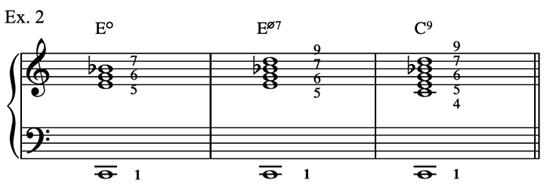
a tick alongside it to indicate that it has been altered (in the same manner as the altered 5th and 7th partials in my previous articles). Comparing E dim7 with the C7b9 in the 2nd bar, we see that E dim7 is really a C7b9 chord without its root
Ex. 3
Building a triad on the 7th degree of the major scale (i.e. the Ionian mode) results in a diminished triad consisting of the leading note, supertonic and subdominant. However when a 7th is added to this triad, the result is a half diminished 7th chord consisting of the leading note, supertonic, subdominant and mediant. See Ex 4.
Ex. 4
The 7th chords built on each of the degrees of the major scale are as shown in Ex. 5. Note the partial numbers placed alongside each chord.

In my previous two articles, I showed that minor triads have an altered 5th partial, and that major 7th chords have an altered 7th partial.
Consequently, of the diatonic 7th chords built on the degrees of the major scale, only the V7 and vii halfdim7 chords contain accurate partial numbers. This may be a reason why historically, their use purely as harmonic structures generally preceded the others.


Ex. 5
Building 7th chord on the 7th degree of the harmonic minor scale produces a diminished 7th chord. Of the commonly used diatonic scales in the tonal system, the harmonic minor is the only scale in which a diminished 7th is found.

Note the partial numbers; in both Ex5. and Ex 6. the chords built on the first six degrees have a 4th partial as their root. The 4th partial represents the acoustical root being 2 8ves below it. Only the diminished 7th and half diminished 7th chords built on the 7th degrees have an apparent root, (the 5th partial); the true acoustical root being represented by the 4th partial i.e. a major 3rd below the apparent root.
Ex. 6

Diminished 7th chords however are commonly used as ‘VII chords’ in major keys. This means that the 7th above the root is lowered by accidental. This note could be referred to as the ‘Minor Submediant’; a note that in classical theory is borrowed from the parallel minor. It is also commonly applied to the II and IV chords making them diminished and minor respectively.

The minor submediant has been utilized this way as an expressive device since the 18th century, becoming more prevalent from the 19th century onwards.
Arguably, the most important chord progression in jazz is the II - V, or II - V - I progression. When working from a chord chart or lead sheet, jazz musicians identify this progression as being major or minor from the chord symbols in this way:


IIm7 - V7 - Imaj7 indicates a major key,

IIm7b5 - V7b9 - Imin indicates a minor key. See Ex. 7 and Ex. 8
It is also not uncommon to see the minor II - V lead to a I major, and vice versa. See Ex. 9 i and ii.
Also the progression: IIm7 - V7b9 - Ima7 is very common. In major keys, it is usually possible to choose to add either a major 9th or minor 9th (b9) to a V7 chord. The minor 9th is the minor submediant of the key as mentioned above. See Ex. 10 i and ii.
Ex. 7 Ex. 8Hi from Mount Gambier, the Blue Lake City. Music is still alive and well, down here in the country.
On May 5th-7th, Mount Gambier becomes the Jazz capital of Australia, with the “Generations in Jazz Festival” attracting many of Australia’s top bands and solo performers.
There are busloads of students arriving from all over Australia before the weekend.
The tent seats 8000 people. Quite a few of my students are performing in bands during the weekend. Such great experience for them either as performers or audience.
Mount Gambier also has a new performance venue opened in February.
The OPUS MUSIC CAFÉ is a venture owned by a local family who are keen to promote local musicians. Performers entertain patrons during lunchtime each Friday and Saturday.


Patrons can enjoy a coffee or meal with lovely entertainment.
My students are preparing their performances for Saturday May 13th, a great first performance of their new exam pieces for 2023. It is fantastic to have somewhere local where musicians can perform in a relaxed and appreciative atmosphere. The décor is very eclectic. LP’s are glued to display cases, along with covers. Records as menus. Serviette holders made from folded EP’s. Cutlery boxes are constructed with tapes glued together. The food and coffee are great too!!
Later in the year, we look forward to the Eisteddfod, closely followed by AMEB exams.

2022 AMEB exam results were very pleasing with every student receiving very high marks.
I was extremely proud of Yenna Joyce who received the Grade 7 Piano for Leisure Scholarship. Yenna performs at another local café on a regular basis.
Of course, there are many other regular musical events that I have not covered but I hope I have given you a tiny peek at how things go musically in Mount Gambier in 2023.
Originally published by The Piano Teacher.
Samantha Coates is an internationally regarded piano pedagogue and presenter. In addition to running an active teaching studio, she is the creator and publisher of BlitzBooks, the music education series that has brought laughter and creativity to music theory, sight reading, and piano repertoire. Samantha’s sense of humour and ability to connect with students through her books and online resources reflect her ongoing dedication to making all areas of music accessible, enjoyable and memorable.
Mine don’t.
There, I said it! My students don’t practise1. And by ‘don’t’, I mean ‘hardly’. And I’m talking about my student base as a whole; whilst I have one or two students who work a bit harder, overall there is definitely not enough practice going on. But here’s the really great thing: I have stopped getting upset about it.
Before I pass on my secret2 to how we can all be less upset and we can all help our time-poor students to feel better, I can tell you that I am a normal piano teacher with normal self-esteem issues. I feel intimidated when I see videos of amazing young pianists. I think to myself, ‘Wow, there’s a LOT of time invested in that piece… how come none of my students practise that much?

In my studio, the lack-of-practice problem has been getting steadily worse over the past 5-10 years, and every teacher I speak to is finding the same3. So, WHY are students practising less? Are they less interested? Is piano less appealing? Do students think they can just do it without practising as much?
I don’t think so. In the demographic in which I teach, there seem to be three main reasons:
1. They have no time.
2. They have hardly any time.
3. They are time-poor.
My students barely have enough time to attend their lessons, let alone practise piano at home. They’re coming to me in a tight window of their day, sandwiched between school and tutoring, or tutoring and swimming, or any number of extracurricular activities. The teenagers especially seem permanently tired, and they are barely through the front door before they’re apologising that they ‘haven’t practised much.’4
Ok, so what can we do about this? I think there are two strategies we can employ.
The first is to evolve our expectations, and the second is to change the language we use with our students.
1. I personally feel there are too few teachers who will admit to this!
2. It’s no secret, that’s just normal clickbait-y phrasing. Wait til you read the end of this article!
3. Except for the ones who won’t admit it.
4. This is a euphemism for ‘I haven’t touched the piano this week.’
I should probably mention that none of my students do exams, except for those doing HSC (final year of high school). I know many teachers who are sometimes at breaking point with students who are going for an exam and not putting in the required practice. That’s a really different situation and one that needs careful handling.
I should also say that I have a thorough onboarding system, so all of my students have supportive parents and understand the importance of practice. This article is not about how to deal with lazy students; it is about how to retain our lovely, well-intentioned students who cannot fit in the amount of practice we would all like.


Whilst it’s wonderful when students show up having practised, these days I’m simply delighted that they
with huge learning curves, and the lesson is always stimulating and challenging. In fact, I’m often secretly delighted when they haven’t practised, because it means we get to do things we never usually have time for!
I use my rote repertoire series almost every lesson, with every student – it is the best way to simultaneously cover sight reading, aural, theory, and creativity. I never repeat content from the previous week, unless the student specifically asks for this.
The mantra in my head is this: Slow progress is still progress. They learn more being here than not being here, regardless of what’s going on at home. As long as the student understands and accepts that progress will be slower with less practice, and the parent’s expectations are also managed, everyone is happy.
Changing our Language

I never start off the lesson asking them how much they’ve practised. After the initial icebreakers, I might ask ‘what piece did you enjoy the most this week?’ or ‘did any of your pieces give you some trouble this week?’ or even ‘if you had had more time, what would you have wanted to play?’
With teens and adults, who are the main apologists, I
they’re doing what they can, when they can. I want them to think of their lessons as problem-solving sessions, and I do not want them to feel guilty. When we start the lesson, I might say ‘which problem areas would you like to work on today?’
I try not to make judgments on the difficulty level of pieces. Instead of saying ‘this piece is too hard’, I’ll say ‘this piece has lots of technical issues and it does take time to learn.’ Talking about how much time investment the piece needs is more helpful for the student. Rather than suggesting pieces that are ‘easier’ we can use words like ‘more accessible’ or even ‘achievable in your preferred time frame’.
I think the best line I’ve ever come up with is the one I use for my HSC students, who often aspire to pieces that are way too time-consuming to learn. I tell them: ‘You are totally capable of learning this piece. The problem is not your ability. The problem is your AVAILability.’
In Conclusion
Since this problem is not going away, we need to evolve and change with the culture. In this way we can not only retain our students, but help them to grow up to be holistic musicians who remember their piano lessons with a smile on their face.

MUSIC TEACHER
27TH BALAKLAVA ESITEDDFOD

Disciplines included are Instrumental Ensembles, Bands, Choirs, Vocal Ensembles, Vocal, Musical Theatre, Contemporary Vocal, Instrumental, Piano, Speech and Drama and the Finale Concert including adjudication of the ‘Adelaide Plains Male Voice Choir’ Vocal Scholarship. Visit http://www.balaklavaeisteddfod.org.au, the Facebook
AUSTRALASIAN PIANO PEDAGOGY CONFERENCE 2024
Dates
: : :
8-12 July 2024

Monash University, Melbourne appca.com.au
SYDNEY INTERNATIONAL PIANO COMPETITION

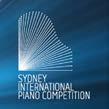
Dates Website
Venue Website : :
5-22 July, 2023 (Applications open in Mid 2022) www.thesydney.com.au/
MITCHAM ORCHESTRA
The Mitcham Orchestra is looking for lower strings, Oboe and Horns.
Rehearsals
Venue Contact Ph. Email
: : SA
: : : : :
Saturday afternoons 1.30pm – 4.15pm
Cumberland Park Community Centre, 390 Goodwood Rd, Cumberland Park
Ros Keynes
8390 3053
rosalind@keynes.id.au
METROPOLITAN MALE CHOIR OF SOUTH AUSTRALIA
2023 INSTRUMENTAL/VOCAL Music Scholarship-2023

Metropolitan Male Choir of South Australia Inc. www.mmcsa.org/about/music-scholarships/
The Metropolitan Male Choir Y2023 music scholarship program for solo Instrumental/Vocal performance, is offered to young people with proven musical ability. Applicants must be 12 to 16 years of age on January 1, 2023.
RECITALS AUSTRALIA WEDNESDAY LUNCH HOUR SERIES 2022
Tickets : $10 or online via website, Facebook, or Vimeo for free.
Enquiries : Ph. 08 8236 7488
Website : www.recitalsaustralia.org.au for more information.
ELDER CONSERVATORIUM OF MUSIC CONCERT SERIES
Lunchtime Concerts
Evening Concerts
Website : www.able.adelaide.edu.au/music/engage/concert-series
Contact : For booking and enquiries: Tel: +61 8 8313 5925
Email : concertmanager@adelaide.edu.au
ADELAIDE SYMPHONY ORCHESTRA
Check their website for the upcoming concerts and support our local orchestra!
Website : www.aso.com.au/concerts-tickets/whats-on/
MUSICA VIVA
www.musicaviva.com.au/concert-season/
FLINDERS STREET BAPTIST CHURCH
Tuesday on Flinders
Time : 1:00 pm
Entry : Free
Website : www.fsbc.asn.au/concerts/
NORWOOD SYMPHONY ORCHESTRA
Venue : Norwood Concert Hall
Tickets : Adult $20, Concession $15, Children Free
Website : www.norwoodorchestra.com/
BURNSIDE SYMPHONY ORCHESTRA
Venue : Burnside Ballroom, 401 Greenhill Road, Tusmore 5065

Tickets : $20 Please purchase online
Website : www.bso.org.au/concerts-2021/
5MBS: MUSIC BROADCASTING SOCIETY OF SA
www.5mbs.com
8346 2324
5mbs@5mbs.com
4A River Street Hindmarsh SA 5007
AUSTRALIAN BAND AND ORCHESTRA DIRECTORS’ ASSOCIATION (ABODA): ABODA SOUTH AUSTRALIA www.abodasa.com.au info@abodasa.com.au
ABODA SA
C/-PO Box 327 Walkerville SA 5081
ABRSM EXAMINATIONS
www.us.abrsm.org/en/home
SA Rep.: Anastasia Chan 8234 5952/0423 282 589 abrsmsa@hotmail.com
ACCOMPANISTS’ GUILD OF SA INC. www.accompanist.org.au
President: Leonie Hempton OAM 8272 8291/0404 145 502 leoniehempton@gmail.com
ADELAIDE BAROQUE
www.adelaidebaroque.com.au
8266 7896
0400 716 554 General Enquiries manager@adelaidebaroque.com.au 10 Clarence Avenue, Klemzig SA 5087
ADELAIDE CHAMBER SINGERS
www.adelaidechambersingers.com/ +61 8 8352 1329 admin@adelaidechambersingers.com
ADELAIDE EISTEDDFOD SOCIETY INC. www.sacoment.com/aes/eisteddfod/
Secretary: Jane Burgess adleisteddfod@adam.com.au jane@janeburgess.com.au
ADELAIDE HARMONY CHOIR www.facebook.com/adelaidephilharmoniachorus/
Secretary: Sherry Proferes adelaideharmonychoir.info@gmail.com
ADELAIDE PHILHARMONIA CHORUS www.philharmonia.net/
ADELAIDE YOUTH ORCHESTRAS www.adyo.com.au/
8361 8896
Executive Director: Ben Finn claire@adyo.com.au
AMEB EXAMINATIONS: SA AND NT www.sa.ameb.edu.au/ 8313 8088 ameb@adelaide.edu.au
AUSTRALIAN NATIONAL ASSOCIATION OF TEACHERS OF SINGING (ANATS) ANATS: SA AND NT CHAPTER www.anats.org.au/sant-chapter
Secretary: Dianne Spence anats.sa.nt@gmail.com 0435 300 070 admin@anats.org.au
ANZCA EXAMINATIONS
www.anzca.com.au
(03) 9434 7640 admin@anzca.com.au
AUSTRALIAN SOCIETY FOR MUSIC EDUCATION (ASME) ASME: SOUTH AUSTRALIA CHAPTER www.asme.edu.au/sa/ President: Luke Gray graylu@trinity.sa.edu.au asme@asme.edu.au
AUSTRALIAN STRINGS ASSOCIATION (AUSTA) AUSTA: SA CHAPTER www.austa.asn.au/chapters/sa/ President: Fiona Patten fionapattenausta@gmail.com +61 439 885 754
AUSTRALASIAN DOUBLE REED SOCIETY www.adrs.org.au
Contact: Josie Hawkes OAM josie.bassoon@gmail.com
AUSTRALIAN STRING QUARTET
www.asq.com.au/ 1800 040 444 asq@asq.com.au
BALAKLAVA EISTEDDFOD SOCIETY www.balaklavaeisteddfod.org.au
Contact: Trish Goodgame 0417 891 834 info@balaklavaeisteddfod.org.au
CON BRIO EXAMINATIONS
www.conbrioexams.com 9561 3582 / 0401 014 565 lily@conbrioexams.com
ELDER CONSERVATORIUM OF MUSIC www.music.adelaide.edu.au/ 8313 5995 music@adelaide.edu.au
ELDER HALL
www.music.adelaide.edu.au/concerts/ 8313 5925 concertmanager@adelaide.edu.au
FLUTE SOCIETY OF SA INC. www.flutesocietyofsa.org
Secretary: Catherine Anderson secretary@flutesocietyofsa.org
INSTRUMENTAL MUSIC: DEPARTMENT FOR EDUCATION
Instrumental Music Office - Klemzig 8261 8988
IM.KlemzigOffice608@schools.sa.edu.au
Instrumental Music Office - Morphett Vale 8392 3800
IM.MorphettValeOffice896@schools.a.edu.au Music Programs 8226 1883 education.musicprograms@sa.gov.au

KODALY MUSIC EDUCATION ASSOCIATION OF SA www.kodalysa.com/ 0405 066 469 kodalysa@gmail.com
MUSICA VIVA
www.musicaviva.com.au for concert details
Box office: 1800 688 482 contact@musicaviva.com.au boxoffice@musicaviva.com.au
MT GAMBIER EISTEDDFOD
www.backstageinc.org.au
Secretary: Maxine Chalinor 0457 067 555 tonymaxine@internode.on.net
MUSICIANS’ UNION OF AUSTRALIA ADELAIDE BRANCH
www.musiciansunion.com.au/ 8272 5013 industrial.officer@musicians.asn.au Federal Treasurer-Sam Moody 0412933865 musosa@bigpond.net.au
ORFF SCHULWERK ASSOCIATION OF SA www.osasa.net/ info@osasa.net
PRIMARY SCHOOLS MUSIC FESTIVAL www.festivalofmusic.org.au
8261 5438 office.psmf799@schools.sa.edu.au
RECITALS AUSTRALIA
www.recitalsaustralia.org.au 8236 7488 info@recitalsaustralia.org.au
ST CECILIA EXAMINATIONS PTY. LTD. www.st-cecilia.com.au
1800 675 292 info@st-cecilia.com.au
SOUTH AUSTRALIAN BAND ASSOCIATION
www.sabandassociation.org
Secretary: David Corkindale secretary@sabandassociation.org
SOUTH AUSTRALIAN MUSIC CAMP ASSOCIATION
www.samusiccamp.com.au
Administrator: Samantha Taylor admin@samusiccamp.com.au
THE SOCIETY OF RECORDER PLAYERS SA INC. www.facebook.com/recorderplayerssa/ 0410 109 135 srpsainc@gmail.com
TRINITY COLLEGE LONDON EXAMINATIONS
www.trinitycollege.com.au
1300 44 77 13: National
Mr Stanley Tudor 8345 3117: Local stanley.tudor@iinet.net.au
UKARIA CULTURAL CENTRE www.ukaria.com
8227 1277 info@ukaria.com
